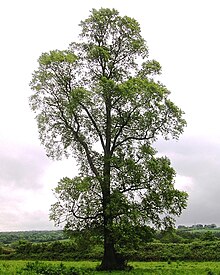Description and Characteristics of Elm
– Elm genus is hermaphroditic with wind-pollinated flowers.
– Elm leaves are alternate and have serrate margins.
– The fruit is a round, wind-dispersed samara.
– Elm trees can grow to great heights, with the American elm reaching over 30 meters.
– Elm species are tolerant of various soils and pH levels but require good drainage.
Taxonomy and Distribution of Elm
– There are approximately 30 to 40 species of elm.
– Hybridization between elm species and the development of local seed-sterile microspecies make species delineation difficult.
– Eight elm species are endemic to North America, while three are endemic to Europe.
– The greatest diversity of elm species is found in Asia.
– Fossils of elm leaves dating back to the Paleocene have been found across the Northern Hemisphere.
Ecology and Propagation of Elm
– Elm propagation methods vary depending on the type and location of the elm.
– Native elm species can be propagated by seed, with optimal conditions occurring after a late warm spring.
– Elm seeds from autumn-flowering elms ripen in the fall and germinate in the spring.
– Hybridization risk exists in seed propagation due to elm species’ ability to hybridize.
– Elms outside their natural range or those unable to pollinate are propagated through vegetative reproduction.
– Elm propagation methods include rooted cuttings, seed planting, and vegetative reproduction.
– Root suckers, hardwood cuttings, softwood cuttings, grafting, and layering are used for vegetative reproduction.
– Bottom heat and humid conditions are maintained for successful cuttings.
– Root suckers remain the easiest and most common propagation method for European field elm.
– Grafting to wych-elm rootstock may be used for specimen urban elms to eliminate suckering or ensure stronger root growth.
Associated Organisms and Pests of Elm
– Pouch leaf galls caused by aphids can be found on elm leaves.
– Elm leaf beetles are common pests that feed on elm foliage.
– Dutch elm disease, caused by a fungus, has devastated elm populations.
– Elm trees provide habitat and food for various organisms, including birds and insects.
– Some elm species have symbiotic relationships with mycorrhizal fungi.
Uses and Importance of Elm
– Elm wood is valued for its strength, durability, and resistance to splitting.
– Elm trees have been used for furniture, flooring, and veneer.
– Elm trees have also been planted as shade trees and for their aesthetic value in landscapes. Source: https://en.wikipedia.org/wiki/Elm
Elms are deciduous and semi-deciduous trees comprising the genus Ulmus in the family Ulmaceae. They are distributed over most of the Northern Hemisphere, inhabiting the temperate and tropical-montane regions of North America and Eurasia, presently ranging southward in the Middle East to Lebanon and Israel, and across the Equator in the Far East into Indonesia.
| Elm Temporal range: | |
|---|---|
 | |
| U. minor, East Coker | |
| Scientific classification | |
| Kingdom: | Plantae |
| Clade: | Tracheophytes |
| Clade: | Angiosperms |
| Clade: | Eudicots |
| Clade: | Rosids |
| Order: | Rosales |
| Family: | Ulmaceae |
| Genus: | Ulmus L. |
| Species | |
See | |
Elms are components of many kinds of natural forests. Moreover, during the 19th and early 20th centuries, many species and cultivars were also planted as ornamental street, garden, and park trees in Europe, North America, and parts of the Southern Hemisphere, notably Australasia. Some individual elms reached great size and age. However, in recent decades, most mature elms of European or North American origin have died from Dutch elm disease, caused by a microfungus dispersed by bark beetles. In response, disease-resistant cultivars have been developed, capable of restoring the elm to forestry and landscaping.
